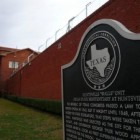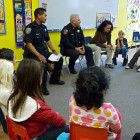
In Texas, Youth Reported with Mental Health Problems Grows Substantially
|
More than half the juveniles in Texas detention facilities in 2012 had mental health issues, according to a recent Associated Press (AP) report based on figures released by the state’s justice officials in February. Over the last three years, officials state the number of juvenile detainees with “intensive need” for mental health treatment has ballooned by 113 percent. Official Texas Juvenile Justice Department numbers indicate 56 percent of the state’s approximately 1,000 detained juveniles had mental illness diagnoses in 2012, compared to 39 percent in 2007. In addition to the mental health findings, the AP report revealed that:
54 percent of young people in detention were confirmed to be gang members;
Of the 1,400 young people in the Texas Juvenile Justice Department’s custody, at least 1,100 — representing about 80 percent of the state’s underage inmates — had substance abuse issues; and
More than half of the state’s juvenile department inmates had been diagnosed with a conduct disorder.






